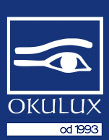 Shortsightedness control means all activities aimed at stopping or significantly slowing down the progression of shortsightedness, performed for children and teenagers. Shortsightedness is a vision defect, not a disease, thus we should not use the term shortsightedness treatment. Shortsightedness control gives incredible effects - it can slow down the progression of this defect by as much as 90%.
Shortsightedness control means all activities aimed at stopping or significantly slowing down the progression of shortsightedness, performed for children and teenagers. Shortsightedness is a vision defect, not a disease, thus we should not use the term shortsightedness treatment. Shortsightedness control gives incredible effects - it can slow down the progression of this defect by as much as 90%.
Example:
If an 8-year-old child has -0.5 D and his/her vision defect increases by 0.5 D each year, his/her vision after ten years may worsen to -5.5 D. However, if we follow the latest medical achievements and slow down the progression of vision defect by 50%, then after 10 years it will increase to -3.0 D only.
How to control shortsightedness?
-
Orthokeratology that stabilises vision defect- the first method is called orthokeratology or Overnight Vision Correction, i.e. wearing GP lenses at night to see well in the daytime. Ortho-k contact lenses slow down the progression of shortsightedness by creating the so-called peripheral myopia (myopic defocus in the periphery). This change in the focus is a sort of "stop signal" preventing further progression of the defect. At our private practice we recommend Swiss MYOPIA CONTROL orthokeratology contact lenses, which is the most effective method to slow down the progression of shortsightedness in children and teenagers.
-
Special bifocal contact lenses - the second effective method to control shortsightedness is wearing bifocal contact lenses with reduced lens power in the periphery. The central part of the lens corrects the visual defect while the peripheral part of the lens has power decreased by 3 D. For instance, if the power in the central part of the lens is -3.5 D, then the power in the periphery will be -0.5 D. At our private practice we recommend very comfortable hard bifocal contact lenses by Japanese company called Menicon.
-
Special bifocal eyeglass lenses - the third possibility is to buy glasses with lenses divided into two segments. The upper one to see clearly from the distance and the lower one for near vision. The difference between the two segments should be at least 2D. We recommend bifocal eyeglass lenses by Japanese Hoya or German Rodenstock.
More info:



